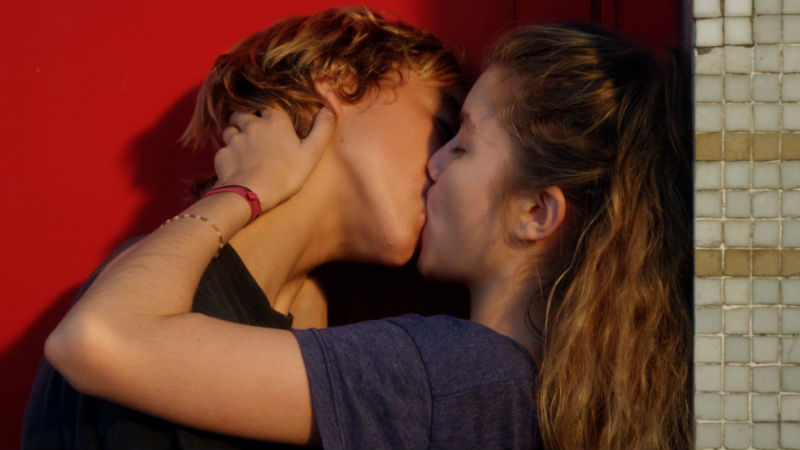The hospital theatre is intended to be entirely decontaminated. Yet the most profound human emotions are within every particle floating in the air. Particularly if you are a mother of two having a life-saving transplant, following the tragic death of a young man, roughly the same age as very own offspring. Ivory Coast-born filmmaker Katell Quillévéré adapts Maylis de Kerangal’s Booker Prize–longlisted eponymous novel and manages to evoke the most profound sentiments in a an environment that is, quite literally, surgically sterile.
Heal the Living tells the story of a 19-year old Simon (Gabin Verdet), who suffers a car accident in a morning after surfing, leaving him braindead. Meanwhile a woman (Anne Dorval) waits to see whether she will be given a new chance of life. Her cardiac condition is so advanced that she’s unable to support her children in the most trivial tasks, and unless she can find an organ donor, her end if clearly eminent. The film director travels back and forth in time intertwining the two tragic stories, which culminate in a heart transplant.
The movie opens up with Simon and his friends surfing during morning twilight. The photography is dark and slow-motion, and the sequence is followed by very symbolic images: cars, windmills at sea and a bridge. Everything represents motion. Life must go on, even if an artificial intervention is required. If humans can place giant aeolian turbines right in the middle of the sea, and build sturdy bridges to be crossed by cars that can move on their own, then there is nothing preventing us from moving a human heart from a brain-dead body to a living one, thereby giving someone a new lease of life.

Heal the Living is a complex kaleidoscope of stories and sentiments. The dialogue is sparse but not laconic. The soundtrack – a combination of a piano soundscore, indie music and David Bowie – is pervasive but not invasive. The performances are astute and moving. Anne Dorval communicates a lot with her eyes. Everything is in the right measure. There’s just enough graphic realism (a drill, an electric saw, etc in operating theatre), without ever being exploitative. This is a film that will bring tear to your eyes, give you heart palpitations, but it won’t make your stomach churn. You will watch the scalpel blade cut through the body, and yet you won’t feel any pain. You will be anaesthetised by a large dose of humanity and compassion injected directly inside your heart.
The message within the film is bright as daylight: organ donation saves lives. Even the film title is imperative: heal the living! So let’s save some lives. In case you haven’t done it yet, click here in order to register with the NHS organ donor register, or here to promote awareness of organ donation and transplants. I have already done it. What are you waiting for? Life is full of unexpected twists and – knock on wood – you may not wake up to see the sun rise tomorrow, just like Simon never did. But you can help someone else do. This is not Hallmark card sentimentality. This is pragmatism.
Heal the Living is showing is out in cinemas across the UK from Friday, April 28th.








